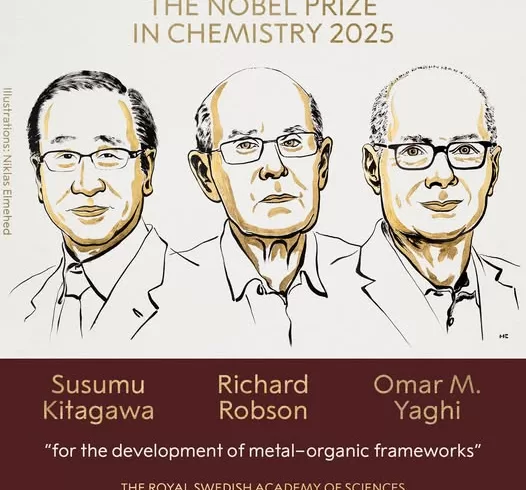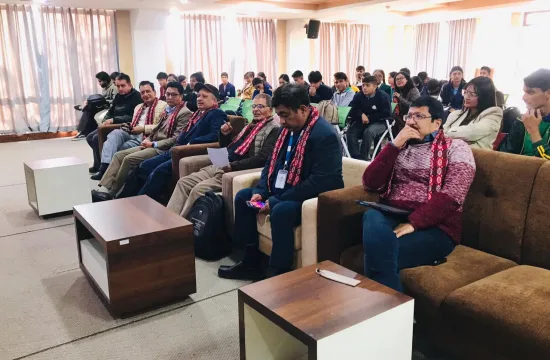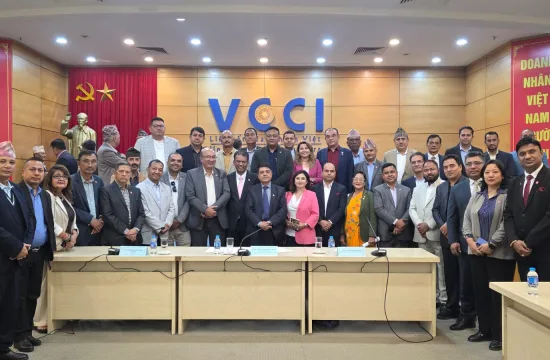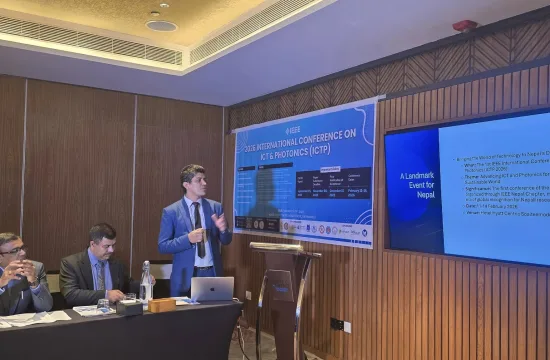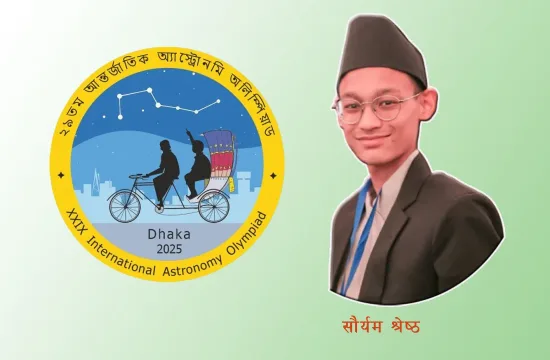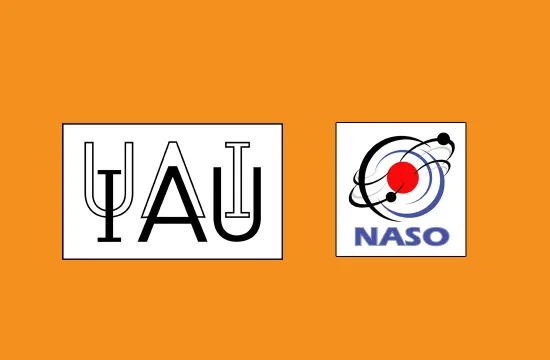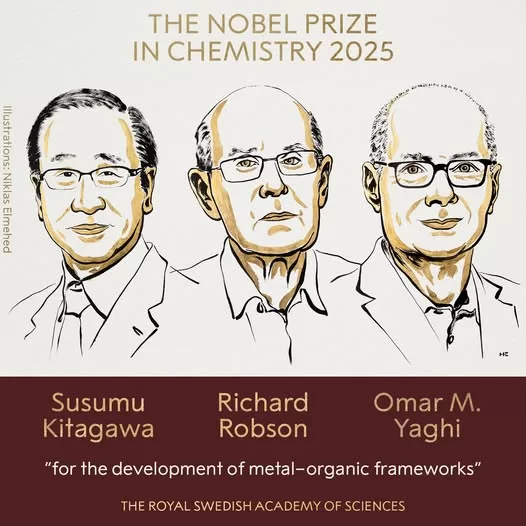
Stockholm, Sweden — The Royal Swedish Academy of Sciences has announced that the 2025 Nobel Prize in Chemistry will be awarded to Susumu Kitagawa, Richard Robson, and Omar M. Yaghi for their groundbreaking work in developing metal–organic frameworks (MOFs), a class of porous materials with transformative applications across science and industry.
The trio’s research has led to the creation of molecular structures with vast internal spaces, allowing gases and chemicals to pass through with remarkable efficiency. These MOFs are now being explored for a wide range of uses, including harvesting water from arid air, capturing carbon dioxide emissions, storing hazardous gases, and catalyzing chemical reactions.
At the heart of their innovation lies a new form of molecular architecture. Metal ions serve as structural nodes, connected by long carbon-based organic molecules. These components self-assemble into crystalline frameworks with large cavities, enabling tailored chemical functionality. By adjusting the building blocks, scientists can fine-tune MOFs to target specific substances or even conduct electricity.
“Metal–organic frameworks have enormous potential, bringing previously unforeseen opportunities for custom-made materials with new functions,” said Heiner Linke, Chair of the Nobel Committee for Chemistry, in a statement celebrating the laureates’ achievement.
This year’s award highlights the growing importance of materials science in addressing global challenges, from climate change to clean energy.
It all started in 1989, when Richard Robson tested utilising the inherent properties of atoms in a new way. He combined positively charged copper ions with a four-armed molecule; this had a chemical group that was attracted to copper ions at the end of each arm.
When they were combined, they bonded to form a well-ordered, spacious crystal. It was like a diamond filled with innumerable cavities.
Robson immediately recognised the potential of his molecular construction, but it was unstable and collapsed easily. However, Susumu Kitagawa and Omar Yaghi provided this building method with a firm foundation; between 1992 and 2003 they made, separately, a series of revolutionary discoveries. Kitagawa showed that gases can flow in and out of the constructions and predicted that MOFs could be made flexible. Yaghi created a very stable MOF and showed that it can be modified using rational design, giving it new and desirable properties.
Susumu Kitagawa, born 1951 in Kyoto, Japan. PhD 1979 from Kyoto University, Japan. Professor at Kyoto University, Japan.
Richard Robson, born 1937 in Glusburn, UK. PhD 1962 from University of Oxford, UK. Professor at University of Melbourne, Australia.
Omar M. Yaghi, Born 1965 in Amman, Jordan. PhD 1990 from University of Illinois Urbana-Champaign, USA. Professor at University of California, Berkeley, USA.

